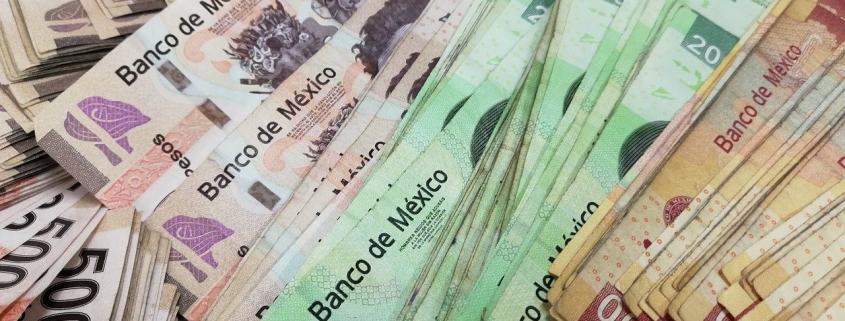What is the Mexican debt crisis?
Topic of Study [For H2 History Students]:
Paper 1: Understanding the Global Economy (1945-2000)
Section B: Essay Writing
Theme II Chapter 1: Problems of economic liberalisation
The Latin American debt crisis of the 1980s
The 1970s and 1980s were characterised by a series of devastating problems that hampered the growth of the global economy. Apart from the twin oil shocks in 1973 and 1979, a serious debt crisis affected developing nations, particularly in the Latin American region. This financial crisis was known as “The Lost Decade” (La Década Perdida) in Mexico and Guatemala.
An unsustainable growth: A sticky situation
Before the Crisis Decades, most developed nations took loans from the World Bank to finance their infrastructural development. In view of the first oil crisis of 1973, commercial banks received a large inflow of funds from oil-exporting nations, particularly petrostates that belonged to the OPEC (Organization of the Petroleum Exporting Countries). In short, petrodollar recycling was carried out.
However, the loans did not translate into profitable investment activities. Some of these loans were mismanaged. For instance, President Mobutu Sese Seko stored $5 billion in personal Swiss bank accounts, which amounted to Zaire’s total foreign debt.
Additionally, in response to the oil shocks, the USA raised interest rates in 1979. This proved disastrous to the debtor nations as their loans originated from Western commercial banks in the USA and Europe.
When Paul Volcker, head of the Federal Reserve, raised U.S. interest rates in 1979 to fight inflation in the United States, he did not intend to create a global debt crisis. But rising U.S. interest rates, and the rising London Interbank Offered Rate (LIBOR), which set interest rates for Eurodollar lending, greatly increased the cost of southern loans, most of them now tied to floating rates set by the United States or LIBOR.
Rising interest rates had two important consequences. First, they increased interest payments on accumulated debt. “Mexico’s interest bill tripled from $2.3 billion in 1979 to $6.1 billion in 1982… for the region as a whole, interest payments more than doubled, from $14.4 billion in 1979 to $36.1 billion in 1982.” …
A second problem was that high U.S. interest rates acted like a magnet, attracting money from around the world… Massive capital flight created several problems for Latin American countries: it deprived them of money they might have used to invest in their own countries, pay for imports, repay debt, and it eroded their country’s tax base…
An excerpt from “Understanding Globalization: The Social Consequences of Political, Economic, and Environmental Change” by Robert K. Schaeffer.
The Trigger
In August 1982, the Mexican Finance Minister Jesús Silva Herzog announced that Mexico can no longer service its debt that amounted to $80 billion. Subsequently, other Latin American nations like Brazil, Chile and Argentina followed suit. Eventually, the International Monetary Fund (IMF) allowed sixteen Latin American countries to conduct debt rescheduling.
The threat of default by Mexico sent the first world bankers into panic. Many had lent more than 100 per cent of their shareholder capital to governments in Latin America and elsewhere. They knew that if the default was to be repeated across the developing world, it would lead to the collapse of the global financial system…
IMF conditionality varied from country to country but generally contained a mix of the following policy ingredients: a cut in public spending, promotion of exports, the elimination of government subsidies, currency devaluation, privatization of state-owned enterprises, and the liberalization of foreign trade and investment…
This approach became known as structural adjustment and, over the course of the 1980s and early 1990s, most Latin American countries fell subject to IMF conditionality. The support for such policies from the US government and powerful institutions based in Washington, DC meant that the policy package became known as the Washington Consensus.
An Excerpt from “Latin American Development” by Julie Cupples.
What can we learn from this article?
Consider the following question:
– Assess the view that the Latin American debt crisis of the 1980s was a devastating problem that affected the global economy.
Join our JC History Tuition and learn how to write JC History Essays for topics like the Global Economy. Join our online learning classes and receive study notes for A Level History.
The H2 and H1 History Tuition feature online discussion and writing practices to enhance your knowledge application skills. Get useful study notes and clarify your doubts on the subject with the tutor. You can also follow our Telegram Channel to get useful updates.
We have other JC tuition classes, such as JC Math Tuition and JC Chemistry Tuition. For Secondary Tuition, we provide Secondary English Tuition, Secondary Math tuition, Secondary Chemistry Tuition, Social Studies Tuition, Geography, History Tuition and Secondary Economics Tuition. For Primary Tuition, we have Primary English, Math and Science Tuition. Call 9658 5789 to find out more.











